Pathogenic microorganisms have long been distributed to all corners of the planet due to the active movement of people. As a result, viruses and bacteria that were once native to certain areas have gained the ability to function everywhere. One of these is the Epstein-Barr virus (EBV). In recent times it was typical for Africa, but today it can overtake any of us in home country. Children are no exception. On the contrary, a child’s fragile body is most susceptible to a virus belonging to the group
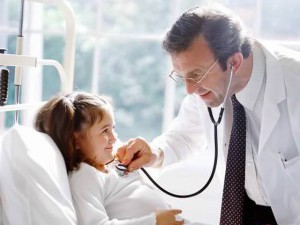
Photo: Epstein-Barr virus
Routes of infection
It has been proven that the Epstein-Barr virus is one of the most common on the planet. Infection with it most often occurs in childhood and adolescence. If adults become infected, severe consequences cannot be avoided.
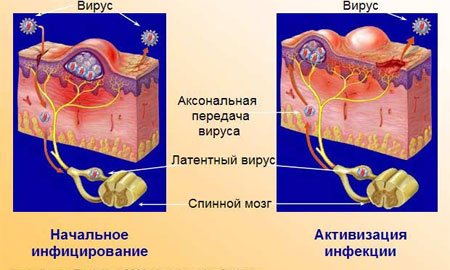
Photo: Spread of the virus
Most often, the virus is transmitted during a kiss, which is why most children become infected from their parents. It is no less easy to become infected through household items, toys and during a blood transfusion procedure.
Infection of a child with EBV can occur as early as mother's womb, which is why it poses an obvious danger to pregnant women.
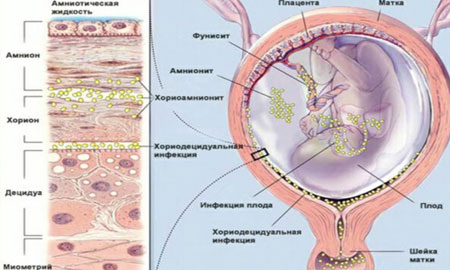
Photo: Fetal infection
Definition of infestation
It is not possible to detect infection immediately, which is due to the very long latent period of EBV. It lasts from 1 to 2 months, sometimes longer. At this time, the virus gradually accumulates in the lymph nodes and mucous membranes. And only a few months after infection may the child first feel a deterioration in health.
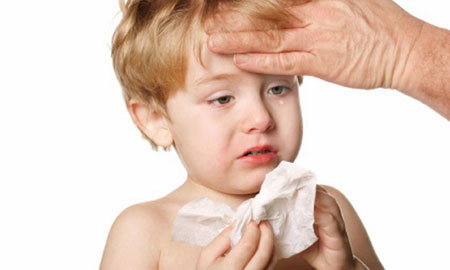
Photo: Feeling worse
Risk group
Those most likely to become infected with the Epstein-Barr virus include: children under one year old. This is explained by their constant presence among adults: parents, relatives, doctors. At the same time, the virus that has often entered the body of infants does not make itself felt even after a couple of months, that is, it does not cause diseases.
In children senior preschool and primary school age who are no less likely to become infected, everything happens differently: the virus that attacks the body results in considerable problems. As a rule, infection results in a disease called. Today, doctors are recording more and more episodes of this disease. Perhaps the most likely reason for the disappointing situation is the low immunity of most children.
It is important to understand that the Epstein-Barr virus is not always infectious mononucleosis. There are other diseases it causes: chronic fatigue syndrome, Burkitt's lymphoma, Hodgkin's disease, systemic hepatitis and others. However, infectious mononucleosis is also not always caused by EBV. Sometimes cytomegalovirus is responsible for its development.
Teenagers suffer from Epstein-Barr virus infection much more difficultly than children younger age. EBV remains in the body, concentrated in the salivary glands and lymph nodes. Even after recovery, the child poses a danger to others, since he acts as a carrier of such a harmful microorganism.
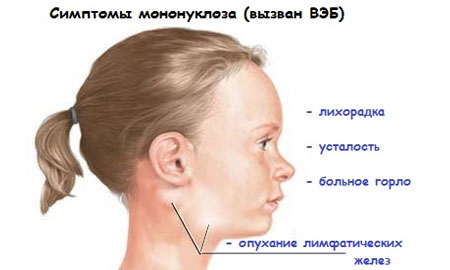
Photo: Virus in lymph nodes
After the disappearance of clinical manifestations, the virus is able to circulate in the child’s body for a long time, and sometimes for life.
Symptoms
Signs of EBV infection vary, but are often very similar to those of a cold or flu. Once in the body, the virus rapidly spreads through the lymph and blood.. First, the child's temperature rises. It may be insignificant - slightly above 37 degrees. Cases of severe fever (the temperature reaches a critical level) are also common. This is followed by intoxication of the body: sweating, chills, headache, lethargy and apathy. A child has inherent discomfort in the throat. Nasal congestion is also present.
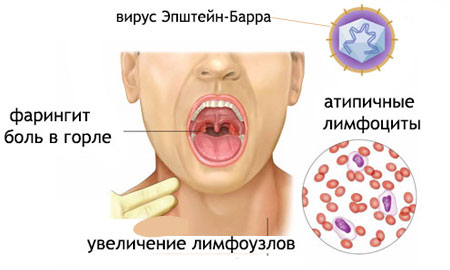
Photo: Signs of pharyngitis
One of the obvious signs of a child being infected with the Epstein-Barr virus is snoring during the night. In this case, no runny nose is observed.
Epstein-Barr virus affects the condition of the submandibular and posterior cervical lymph nodes. They noticeably increase in size. In some cases, this is determined by the doctor by palpation, in others everything is noticeable to the naked eye. There is also an enlargement of the spleen and liver. Rashes may appear on the child's body.
When infected with the Epstein-Barr virus, the child becomes weak. He is characterized by rapid fatigue even without an obvious reason. Such symptoms may persist even after recovery.
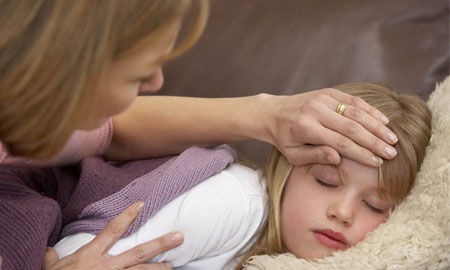
Photo: When infected, the child becomes weak
Acute EBV infection often affects the nervous system. It is likely that encephalomyelitis or meningoencephalitis will develop.
Diagnostics
To identify the Epstein-Barr virus in a child’s body, consultation with a pediatrician and an infectious disease specialist is required. Blood test required. On the recommendation of a doctor, an immunological examination may be prescribed.
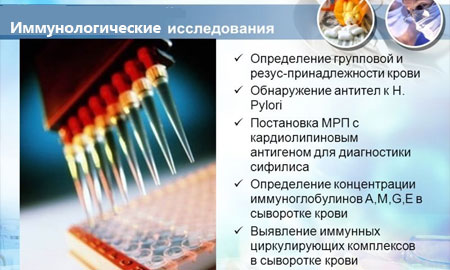
Photo: Immunological studies
Epstein-Barr in children: treatment
Currently on a specific course of treatment viral infection Epstein-Barr has not been developed. Doctors focus their efforts on relieving the child’s condition and preventing possible complications. In other words, symptomatic therapy is important. For this purpose the following are used:
- Medicines to control high fever and minimize symptoms of infection (body aches, sore throat, headache)
- Corticosteroid medications to help relieve swelling of the tonsils and throat
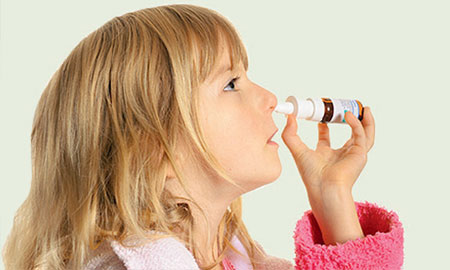
Photo: Means to facilitate nasal breathing
Very often, to eliminate the symptoms inherent in EBV, homeopathic remedies, aimed at normalizing the size of lymph nodes. One of the most effective is Lymphomyosot.
Antibiotics are not used in the treatment of EBV due to ineffectiveness. Their use is justified only in the event of a secondary bacterial infection. There is no point in using antiviral drugs either.. Unfortunately, they do not have a destructive effect on the Epstein-Barr virus.
Treatment for a child infected with EBV involves drinking enough fluids and getting proper rest. The child should be freed from excessive mental and physical stress.
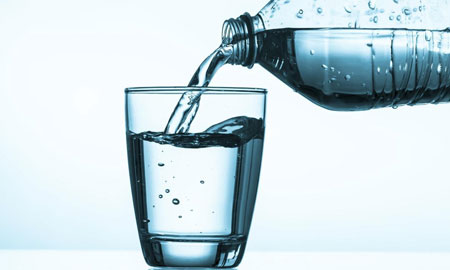
Photo: Drinking enough fluids
Is there any point in traditional medicine recipes?
It is quite obvious that if traditional medicine is unable to cope with the Epstein-Barr virus, alternative medicine will also be powerless. The only way recipes from “grandmother’s chest” will help is to alleviate the condition of an infected child. For example, consuming products containing echinacea and vitamin C is a path to gaining strength, and decoctions of chamomile and immortelle will help minimize the negative impact of the virus on the liver.
Do not heat or massage the lymph nodes without first consulting a doctor!

Photo: Chamomile decoction
Prevention
Unfortunately, a vaccine against the Epstein-Barr virus has not been developed, so parents can protect their child from trouble by explaining to him the rules of personal hygiene and exercising in a timely manner.
The Epstein-Barr virus, discovered in 1964 by scientists Michael Epstein and Yvonne Barr, belongs to the fourth type of herpesvirus - that is, it is a “relative” of cytomegalovirus and the well-known herpes simplex. Epstein-Barr virus has been proven to be one of the most common human viruses, with most people becoming infected during childhood or adolescence. According to experts, currently about 50% of the adult population of the Earth is infected with the Epstein-Barr virus. Unfortunately, this “popular” virus can cause serious problems in the body. What do you need to know to resist infection?
What makes the Epstein-Barr virus especially “dirty” is the fact that the primary infection, as a rule, has no clinical manifestations or looks like a common cold. Contact with this virus usually occurs while childhood. The insidious infection can be transmitted in a variety of ways - airborne droplets, household contact, sexual contact, as well as through transfusion of contaminated blood or from mother to child. The latter route is the most typical in early manifestations of Epstein-Barr virus infection.
If a massive infection occurs (especially with a weakened immune system), the child may develop a clinical picture of infectious mononucleosis - a disease that for a long time was attributed exclusively to childhood infections! After a child recovers from infectious mononucleosis, the following options for the “behavior” of the Epstein-Barr virus are possible:
How does Epstein-Barr virus infection manifest?
Doctors see the particular danger of the Epstein-Barr virus in the unpredictability of the blow it will cause. Thus, against the background of this infection, chronic processes in the kidneys, myocardium, and liver can be detected, possibly with the clinical picture of chronic infectious mononucleosis. No less likely are prolonged low-grade fever (the so-called “rotten” temperature around 37.5 ° C), frequent bacterial and fungal diseases, damage to the gastrointestinal tract and central nervous system.
Even the occurrence of an oncological process in the lymphoid tissue cannot be ruled out (Burkitt's lymphoma, stomach cancer, colon or small intestine cancer, leukoplakia of the oral mucosa and tongue, nasopharyngeal carcinoma, and so on).
Recently, the Epstein-Barr virus has been associated with the emergence of the so-called chronic fatigue syndrome. There is also an opinion that the long-term consequences of infection may be the occurrence of systemic autoimmune diseases connective tissue such as rheumatoid arthritis, systemic lupus erythematosus, etc.
Why such a variety of outcomes of acute infection with the Epstein-Barr virus? It turns out that human blood cells, namely B-lymphocytes, designed to protect us from hostile microorganisms, have receptors for the Epstein-Barr virus! The virus multiplies in the cell, buds, and at the same time the B-lymphocyte cell itself may not be destroyed: it serves as its “universal pass” to any corner of the human body. As a result, long-term chronic persistence of the virus occurs in the bone marrow. In this case, the virus may not reproduce in cells for a long time.
Epstein-Barr virus and infectious mononucleosis
Infectious mononucleosis (synonyms - Filatov's disease, monocytic tonsillitis, Pfeiffer's disease, glandular fever) is a typical manifestation of acute massive infection with the Epstein-Barr virus. Most often observed in childhood, and especially in adolescents. Infection, as a rule, occurs from a sick person who massively releases the Epstein-Barr virus into the environment. The main route of infection is airborne. Most often, infection occurs through saliva (when using shared utensils, when kissing). Acute infectious mononucleosis is characterized by a violent onset in the form of fever, enlarged and painful lymph nodes, tonsillitis, enlarged liver and spleen. In addition, mononucleosis (both acute and chronic) is almost always accompanied by hepatitis, including the icteric form.
However, in recent years, cases of acute infectious mononucleosis have become less and less common. Most often, this disease is initially chronic. Then it manifests itself as a slight long-term increase different groups lymph nodes, general weakness, fatigue, poor sleep, headache, muscle pain, low-grade fever, abdominal pain, diarrhea, herpetic rashes on the skin and mucous membranes, pneumonia.
After suffering from infectious mononucleosis, from several months to several years, an increase in various groups of peripheral lymph nodes can be observed, and the release of the Epstein-Barr virus into the environment can last up to 1.5 years. But with all that said, there is some good news: getting infected with infectious mononucleosis is not easy. This is due to the fact that most people have previously encountered its pathogen and have immune protection against it, being carriers of the virus or chronic infection. Consequently, the risk of contracting infectious mononucleosis is highest in children's groups, where there may be children for whom contact with the virus will be the first in their lives.
At the same time, the risk of infection with the Epstein-Barr virus is very high during blood transfusion and when transmitted from mother to child through the placenta.
Diagnosis of Epstein-Barr virus infection
To diagnose the Einstein-Barr virus, laboratory research methods are used: general blood test, biochemical blood test, immunogram, serological tests.
A general blood test for infectious mononucleosis reveals slight leukocytosis and lymphomonocytosis with atypical mononuclear cells more than 10% in the blood count, thrombocytopenia or thrombocytosis. After suffering from infectious mononucleosis, a child may have lymphocytosis and atypical mononuclear cells (up to 10%) for a long time (from 1-2 months to 1 year). If the number of mononuclear cells begins to increase, leukocytopenia and thrombocytopenia occur, this may indicate a relapse of infectious mononucleosis or its transition to a chronic form.
In a biochemical blood test, an increase in the values of ALT, AST, alkaline phosphatase, and bilirubin is noted in mononucleosis hepatitis.
Shifts of various types can also be detected in the immunogram, indicating the tension of the antiviral component of immunity.
But all these changes are not specific to infection with the Epstein-Barr virus. Therefore, in addition to general clinical research methods, to confirm infection and determine the degree of virus activity, it is necessary to conduct a serological study (by ELISA method) and DNA diagnostics (by PCR method).
Experts distinguish between latent and active (“not scary” and “terrible”) infection with the Epstein-Barr virus, and a serological blood test helps them with this. Thus, during acute infection with the Epstein-Barr virus and during the period of exacerbation of chronic infection, IgM class antibodies are detected in the blood, as well as a high level of early IgG class antibodies to VCA, the level of which subsequently decreases, although threshold level lasts for months. But IgG antibodies to EBNA after a “date” with the Epstein-Barr virus remain in the blood for life, so their presence cannot indicate the activity of the virus and the need for treatment.
If serological tests are positive, to clarify the stage of the disease process and its activity, it is necessary to conduct DNA diagnostics - testing for viral DNA using PCR in the blood and/or saliva to determine the activity of the virus. Sometimes this method is used to examine material obtained from lymph nodes, liver, and intestinal mucosa. DNA diagnostics allows you to identify both healthy carriers of the Epstein-Barr virus and determine acute infection or exacerbation of chronic infection (virus activation). But even in this case, we must remember that 15-20% of children chronically infected with the Epstein-Barr virus may experience excretion in saliva in the absence of virus activation.
Treatment of children infected with Epstein-Barr virus
The goal of treating Epstein-Barr virus infection is to eliminate its clinical manifestations and transfer the active infection to a latent form, in which it is not dangerous for the child. Therefore, children whose carriage of the Epstein-Barr virus is not accompanied by clinical manifestations and laboratory changes are not subject to treatment.
Alas, there is currently no clearly effective and reliable method of etiotropic therapy for infectious mononucleosis and other manifestations of infection with the Epstein-Barr virus. Acute infectious mononucleosis and generalized damage by the Epstein-Barr virus are usually treated in an infectious diseases hospital. Other forms can be treated on an outpatient basis.
Enlargement of peripheral lymph nodes in a child infected with the Epstein-Barr virus does not require treatment or additional examination within 2-3 weeks. If it persists for a longer period, the child should be examined for possible activation of a chronic viral infection and, accordingly, treatment should be started.
Epstein-Barr virus: prognosis depends on prevention
The prognosis for the future health of a child infected with the Epstein-Barr virus depends on many factors: the state of immunity, genetic predisposition, nutrition, surgical interventions, avoidance of stress, other viral and bacterial infections, etc.
It is necessary to understand that activation of the Epstein-Barr virus, which infects up to 95% of the population, can occur when the immune response is weakened, the immune system is depleted as a result of bacterial, fungal and other viral infections, due to vaccination, stress, serious illnesses, exacerbations of chronic processes, intoxication . For example, you should be extremely careful with routine vaccination of a child who has had infectious mononucleosis, as it can lead to activation of the virus. So don't forget once again remind the observing pediatrician that your baby is “familiar” with the Epstein-Barr virus!
Parents should also keep in mind that even after successful treatment of the Epstein-Barr virus and its transfer to an inactive form, the child should be kept in gentle conditions and regularly monitored by a doctor to avoid possible activation of the virus.
Epstein-Barr virus is quite common in children and adolescents. It was discovered in 1964 and is considered a descendant of herpes. Scientists say that approximately half of the world's adult population is infected. Experts have proven that EBV often causes serious disorders in a child’s body. The infection has a number of features that need to be familiarized with in order to successfully treat it.
The primary symptoms of infection with the virus do not differ from the manifestations of normal colds. In children, the infection is transmitted through airborne droplets or through blood transfusion from a mother infected with the virus.
With weak immunity in the case of massive infection, Epstein-Barr infection sometimes leads to the development of infectious mononucleosis. After which they are observed various options its manifestations:
- Sometimes the virus is removed and the patient recovers. However, this outcome of events is extremely rare.
- Absence of any signs of illness. Only an appropriate analysis can detect the presence of infection. Thus, the patient is its carrier.
- Chronic infections in various manifestations. The most pronounced symptoms of the Epstein-Barr virus are observed in young children.
The consequences of the disease in children are dangerous, as is the unpredictability of its outcome. It is possible to identify chronic processes in the kidneys and liver, elevated body temperature for a long time, fungal diseases, problems of the central nervous system and stomach pathologies. Chronic fatigue syndrome is associated with EBV.
 Some diseases caused by dangerous infections:
Some diseases caused by dangerous infections:
- lymphogranulomatosis;
- oncological diseases of the nasopharynx, intestines and stomach;
- lymphomas;
- immune deficiency;
- hepatitis;
- herpes.
Elimination of disease manifestations
Treatment of those infected consists of getting rid of the active form of the disease, which is dangerous to health. Children who are carriers of the virus without any symptoms are not prescribed treatment.
Sorry, not found at this time. effective way therapy for infectious mononucleosis. With this form of the disease, the patient must be treated in a specialized hospital. If other forms are detected, outpatient treatment is usually carried out. In this case, children are prescribed a special diet and rest.
Epstein-Barr virus is often accompanied by enlarged lymph nodes. Such symptoms do not require treatment for several weeks. If they persist for a longer period of time, additional examination is necessary for the activation of a viral infection, as well as the prescription of appropriate methods of its treatment.
Correction of the immune system can be carried out with the help of some immunomodulators (Likopid, Derinat), biological stimulants (Actovegin).
Treatment can last several months and depends on the form and severity of the disease.
The further health status of children with Epstein-Barr disease may be determined by a number of individual characteristics:
- state of the immune system;
- carrying out vaccination;
- correct diet;
- the presence of stressful situations;
- genetic predisposition;
- some viral infections.
It must be remembered that even with an inactive form of the disease, appropriate gentle conditions must be created for children who have had the Epstein-Barr virus. Such patients should be under constant medical supervision to avoid recurrence of the infection and its activation.
Epstein-Barr virus (abbreviated EBV) belongs to the gammaherpes family and consists of linear DNA about 172 kb. in length. Epstein-Barr virus is an extremely common virus that affects almost all people at one time or another in their lives. In regions with a low standard of living, infection occurs in childhood, in developed countries–in early youth or mature age. Thus, in countries with not very good conditions life and absence modern methods Children are exposed to EBV during the first few years of life. In this case, the infection often goes unnoticed, and these people become immune for the rest of their lives. On the other hand, in countries where the standard of living is high and modern sanitation is developed, exposure to EBV appears at a slightly older age (from 15 to 30 years) and the infection develops into the disease mononucleosis. In most cases, it has no serious consequences other than a short illness. The EBV virus is usually present in the body and remains inactive throughout life. Research shows that about 50% of children under the age of five have EBV. The more mature category of people is 95% infected with this virus.
The main reason for the spread of chronic viral infections is the negative impact of the environment (toxins, stress, poor diet, sensory overload) and as a result of metabolic disorders, a weakened immune system.
EBV is found in the host's saliva and is primarily transmitted through personal close contact involving the exchange of saliva. It can be transmitted through saliva during a kiss, or by sharing utensils or drinking from the same bottle. This is why mononucleosis, which is often caused by the Epstein-Barr virus, is commonly called the “kissing disease.” Transmission through blood is very rare.
In patients with a normal immune system, most virus-infected lymphocytes are destroyed most quickly. However, the remaining number of B cells causes the virus to persist throughout the life of the host. Consequently, in many healthy people without symptoms of the disease, there may be a latent form of the virus. In some recovering people, the virus goes dormant and periodically reactivates in saliva, which then becomes infectious material. These people are called asymptomatic carriers. For this reason, it is very difficult to prevent the spread of infection.
EBV in children more often it proceeds almost unnoticed, and in adolescence and adulthood it can have a more severe course.
At-risk groups
The main risk group for EBV infection includes children under 1 year of age who are constantly surrounded by other children and adults. Infection of the virus in children under three years of age most often goes unnoticed, without symptoms, and mainly schoolchildren and adolescents are exposed to various viral diseases. In teenagers and young adults, the Epstein-Barr virus can cause mononucleosis, which is a more serious condition.
Symptoms of Epstein-Barr virus infection
Symptoms of Epstein-Barr virus infection may vary significantly among different people. They are vague and similar to cold or flu symptoms. Some children and adults may not experience any changes in their physiological state at all, but still spread the infection.
Symptoms include:
- body aches;
- cough ;
- rash
In rare cases, Epstein-Barr virus infection or mononucleosis may lead to serious and even life-threatening complications, such as meningitis, hepatitis, splenic rupture and a number of other diseases.
Treatment
A specific course of treatment for Epstein-Barr viral infection has not yet been developed. The main measures are aimed at alleviating symptoms so that the child feels comfortable enough and saves strength for further recovery without developing complications.
Treatment for Epstein-Barr virus infection includes:
- using acetaminophen or ibuprofen, which reduce fever and minimize other symptoms of infection such as headache, sore throat, and body aches;
- the use of corticosteroid drugs, which reduce swelling of the tonsils and throat that occurs with mononucleosis;
- additional fluid intake;
- proper rest and sleep.
Antibiotics are not prescribed for Epstein-Barr viral infection because they are ineffective. However, antibiotics may be prescribed if the body develops a secondary bacterial infection as a complication of EBV, such as bacterial tonsillitis. Antiviral drugs currently available also have no effect in treating Epstein-Barr virus.
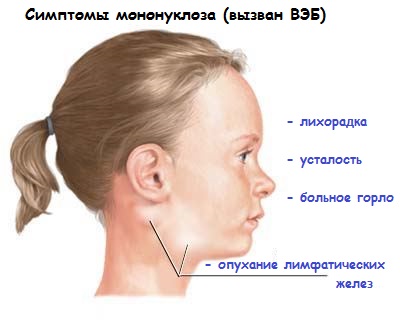
[ warning ]Children and teenagers with Epstein-Barr virus infection or another viral infection should not use aspirin or drugs containing his due to the risk of developing a rare but life-threatening condition called Reye's syndrome. Reye's syndrome most often affects children and adolescents and is associated with taking aspirin during a viral illness such as EBV infection, cold or flu.[/warning]
Additional and unconventional methods Treatments will not help fight Epstein-Barr virus infection, but they can help increase comfort, promote rest and maintain strength during illness. Treatments include:
- Drinking chicken soup, which can help relieve nasal congestion and improve absorption useful substances which helps to maintain strength
- eating foods that contain vitamins C , echinacea and zinc.
Rarely, Epstein-Barr viral infection or mononucleosis gut lead to serious, even life-threatening complications. To minimize the risk of serious complications, you must follow the treatment plan developed by your doctor specifically for your individual child.
In most cases, symptoms go away within a few weeks with plenty of fluids and adequate rest. If symptoms persist, you should consult your doctor.
Prevention
There is currently no vaccine against the Epstein-Barr virus, but you can try to protect your children by following the rules of prevention. Children should be taught to wash their hands frequently throughout the day with soap and warm water for at least 15 seconds, and not to share drinks or cutlery with others, even if they seem healthy.
It was discovered in the sixties of the last century by the scientist M.E. Epstein and his assistant I. Barr during microscopic studies of cells of a malignant tumor, which later became known as Burkitt's lymphoma.
transmission route
They become infected in childhood and adolescence. Although the features of its distribution have been studied for 40 years, they remain not fully understood. It is infected by aerosol, transmissible means, and it can also be transmitted through contact with an infected person, through mother's milk and sexually (during oral sex).
Infection in childhood occurs through toys on which the carrier’s saliva remains in a latent form. Among adults, the spread of a dangerous virus through kissing with saliva is common. This method is considered very common and familiar.
Invading the salivary glands, thymus, cells of the mouth and nasopharynx, the Epstein-Barr virus begins to infect the human body. With a decrease in immunity, the latent form can turn into an open form, causing a number of dangerous diseases.
Pathogenesis
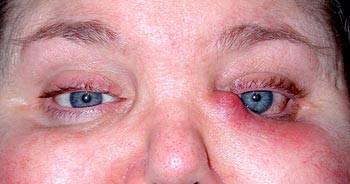
There are 4 stages in pathogenesis:
At the first stage it penetrates into the oral cavity and nasopharynx, it enters the salivary ducts and the nasopharynx, where it multiplies, infecting healthy cells.
At the second stage enters the lymph nodes through the lymphatic routes, damaging B-lymphocytes and dendritic cells, causing their avalanche-like proliferation, which leads to swelling and enlargement of the lymph nodes.
Third stage— the central nervous system and lymphoid tissues are affected, along with other important organs: heart, lungs, etc.
Fourth stage characterized by the development of specific immunity against the virus, which produces the following result:
- complete recovery;
- or the infection becomes chronic.
There are two known forms - typical and atypical. The typical one has all the symptoms characteristic of the disease, while the atypical one has only 2-3 symptoms (maybe even one). Atypical ones are identified based on laboratory test data.
In terms of severity, it can be mild, moderately severe and severe. In severe cases, the body temperature reaches its maximum, the febrile state lasts for a long time, the lymph nodes become greatly enlarged, as well as the spleen, and sometimes the liver.
Adenoiditis persists for a long time, the tonsils are severely hyperemic, the tongue is coated, the leukocyte level in the general blood test is higher than normal.
Diagnostics
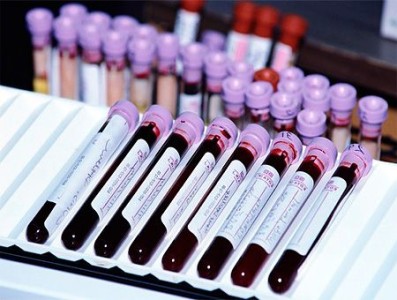
Diagnosis is carried out on the basis of patient complaints, according to manifestations primary symptoms and data from laboratory blood tests.
Important for diagnosis are:
1. Indicators general analysis blood. After the introduction of the B virus, lymphocytes become infected, and their active reproduction begins. The process leads to an increase in their concentration in the blood. Such cells are scientifically called “atypical mononuclear cells.”
In infected people, ESR, leukocyte and lymphocyte counts are higher than normal. Platelets also increase or, on the contrary, may be decreased, the same with hemoglobin levels (anemia of a hemolytic or autoimmune nature is observed). When examined under a microscope, doctors identify them.
2. To accurately determine if you are infected with the virus, blood is taken for tests to identify antibodies against antigens. When antigens enter the blood, they are recognized by cells of the immune system.
3. When performing a biochemical analysis of blood taken from a vein on an empty stomach, protein is detected in the acute phase; elevated bilirubin levels indicate liver disease.
ALT, AST, LDH are special proteins found in the cells of the body. When an organ is damaged, they enter the blood, and their increase indicates disease of the liver, pancreas or heart.
4. A consultation of narrow specialists is held with the involvement of an immunologist and an ENT doctor, an oncologist and a hematologist. The final conclusions are made on the basis of clinical studies with a blood test for coagulation, X-rays of the nasopharynx and chest, and ultrasound of the abdominal organs.
Initial symptoms of Epstein Barr virus, indicating that the patient is infected
The incubation period for the acute form lasts approximately a week after introduction. The patient begins to develop a picture similar to acute respiratory disease.
These are the initial symptoms:
- the temperature rises to critical levels, the patient shudders;
- the throat hurts, you can see plaque on the swollen tonsils;
- upon palpation, enlargement of the lymph nodes under the jaw, on the neck, in the groin and armpits is felt.
During a blood test, the appearance of atypical mononuclear cells is observed - young cells that are similar to lymphocytes and monocytes.
A person gets tired quickly, appetite and performance decrease. A papular rash can be seen on the body and arms. The activity of the gastrointestinal tract is disrupted. Patients often experience soreness in the muscles and joints. They often suffer from insomnia and chronic fatigue syndrome.
Associated diseases
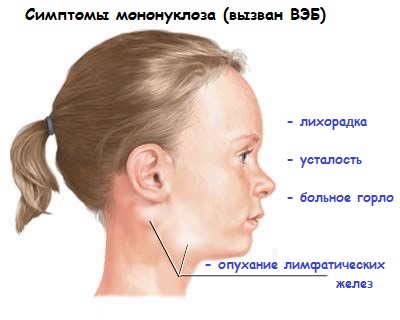 Most dangerous disease which can cause is considered to be Filatov's disease, or it is also called infectious mononucleosis. The incubation period for this disease is usually about a week, but can last up to 2 months.
Most dangerous disease which can cause is considered to be Filatov's disease, or it is also called infectious mononucleosis. The incubation period for this disease is usually about a week, but can last up to 2 months.
At the beginning, the patient begins to feel chills and malaise, joint and muscle pain, the throat swells, the patient quickly gets tired, and sleeps poorly.
The body temperature gradually rises and reaches critical levels - up to 40 degrees, the patient has a fever. The main defining symptom of a viral infection is polyadenopathy, which appears 5-6 days after manifestation and is characterized by an enlargement of all lymph nodes. They become slightly painful during palpation.
Nausea and abdominal pain lead to vomiting. The skin remains unchanged, but sometimes herpetic rashes are observed. The palatine tonsils become inflamed, and pus is discharged from the back of the throat. Nasal breathing becomes difficult, accompanied by a nasal voice.
Later, the spleen enlarges (the phenomenon of splenomegaly), which returns to normal after 2-3 weeks. Accompanied by the appearance of a rash on the body, papules and spots, roseola spots, as well as hemorrhages.
Sometimes there is mild jaundice with darkening of the urine.
A person who has had infectious mononucleosis will no longer be ill, but will remain a carrier for life. The Epstein Barr virus is dangerous due to its complications: meningoencephalitis, serous meningitis, and there may also be a threat of encephalomyelitis.
People infected with the Epstein-Barr virus can also develop other diseases:
- lymphogranulomatosis;
- systemic hepatitis;
- lymphoma, including Burkitt's lymphoma;
- malignant tumors of the nasopharynx;
- neoplasms in the salivary glands, gastrointestinal system;
- herpetic lesions of the genitals and skin;
- hairy leukopenia; chronic fatigue syndrome;
- multiple sclerosis;
- proliferative syndrome, which develops in those with acquired immunodeficiency or from birth.
As infection develops, B lymphocytes increase so much that the functioning of important internal organs is disrupted. Many children who have a congenital form of immunodeficiency die from this disease. Those who escape suffer from lymphoma, anemia, agranulocytosis or hypergammaglobulinemia.
Treatment
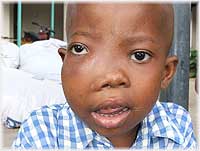 The boy has Epstein Barra
The boy has Epstein Barra Treatment of the infection should be carried out by a doctor specializing in infectious diseases, and if a tumor is detected in the form of neoplasms, by an oncologist. Patients with severe infectious mononucleosis are subject to immediate hospitalization with an appropriate diet and bed rest.
Active treatment begins with the use of drugs to stimulate phagocytes and natural killer cells, creating an antiviral state of healthy cells.
The effectiveness of the following prescriptions has been proven:
- interferon preparations - alpha: acyclovir and arbidol, viveron, valtrex and isoprinosine;
- intramuscular injection of roferon and reaferon –EC;
- intravenous administration of immunoglobulins, such as pentaglobin and intraglobin, which also give good results;
- immunomodulatory drugs: derinat, lycopid and leukinferon;
- biological stimulants (solcoseryl and actovegin).
An auxiliary role in treatment is played by the complex intake of vitamins and antiallergic drugs, such as tavegil and suprastin.
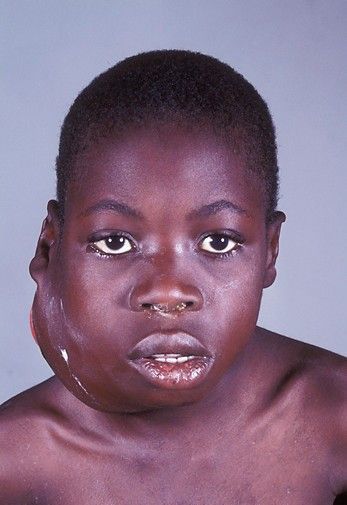
If a purulent sore throat is detected, a course of antibiotics is prescribed for a week or 10 days (cefazolin or tetracycline).
When the body temperature rises, antipyretic paracetamol tablets are prescribed, and when coughing, mucaltin or libexin tablets are prescribed. If there is difficulty breathing through the nose, naphthyzine drops can help.
Treatment of patients can be carried out on an outpatient basis, prescribing interferon-alpha under systematic laboratory monitoring. After three to four months, you need to donate blood for a biochemical analysis for immunological examination and PCR diagnostics.
Treatment may require two to three weeks or several months, depending on the severity and complications, as well as its type (acute or chronic).
If a disease is detected, the saliva of other family members must be examined to avoid re-infection.
Why is Epstein Barr dangerous?
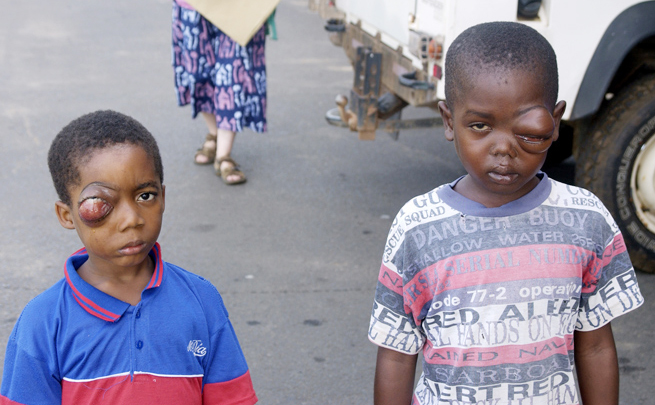 On the face
On the face It poses a serious danger due to its complications. At the very beginning of the disease, in the first weeks, it can lead to damage to the central nervous system. Often there are meningitis, psychosis and hemiplegia.
Sometimes the Epstein Barr virus provokes autoimmune hemolytic anemia. Abdominal pain that radiates to the left shoulder may indicate a ruptured spleen. With severe swelling of the tonsils, obstruction of the upper respiratory tract is sometimes observed.
Epstein Barr virus during pregnancy can cause intrauterine infection of the fetus and lead to pathology of its important organs and lymph nodes.
Preventative measures against Epstein Barr virus
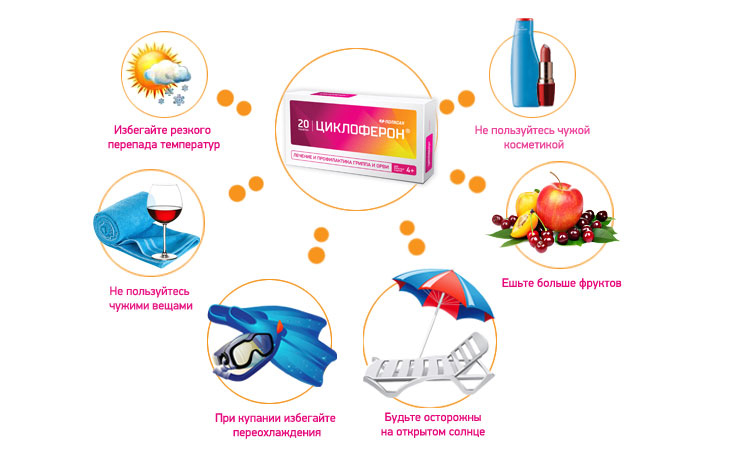
There is no need to be afraid of the virus, since it is impossible to avoid infection. Adults already have immunity, since they develop antibodies to the Epstein-Barr virus after suffering an illness in childhood.
If the child is good immune system, it does not need to be overly protected from infection. It has been noticed: the sooner children get sick with the Epstein Barr virus, the weaker the course of the disease will be. Maybe they won't even feel it. And children who have been ill will develop immunity for the rest of their lives.
For those with weak immunity, a special vaccine is currently being developed to protect the body from infection with this virus.
The most effective prevention is considered to be increasing resistance caused by the Epstein Barr virus and strengthening the immune system.
Here are mandatory preventive measures:
- Hardening is recommended from birth. Children should be gradually accustomed to bathing in warm water at body temperature and walking in the fresh air, and the use of cold water for dousing throughout life will also help in hardening.
- Maintaining healthy image life, competently, scientifically correctly, you need to create a balanced diet with the introduction of fresh vegetables and fruits. The vitamins and microelements contained in them, special multivitamins, should support the body at a high level.
- Avoid any somatic diseases that weaken the immune system.
- Psychological and physical stress also negatively affects the body’s condition and reduces immunity.
- We must live by the motto “movement is life”, spend a lot of time outdoors in any weather, engage in feasible sports: skiing in winter, swimming in summer.
Who said that curing herpes is difficult?
- Do you suffer from itching and burning in the areas of the rash?
- The sight of blisters does not at all add to your self-confidence...
- And it’s somehow embarrassing, especially if you suffer from genital herpes...
- And for some reason, ointments and medications recommended by doctors are not effective in your case...
- In addition, constant relapses have already become firmly established in your life...
- And now you are ready to take advantage of any opportunity that will help you get rid of herpes!
An effective remedy from herpes exists. and find out how Elena Makarenko cured herself of genital herpes in 3 days!



